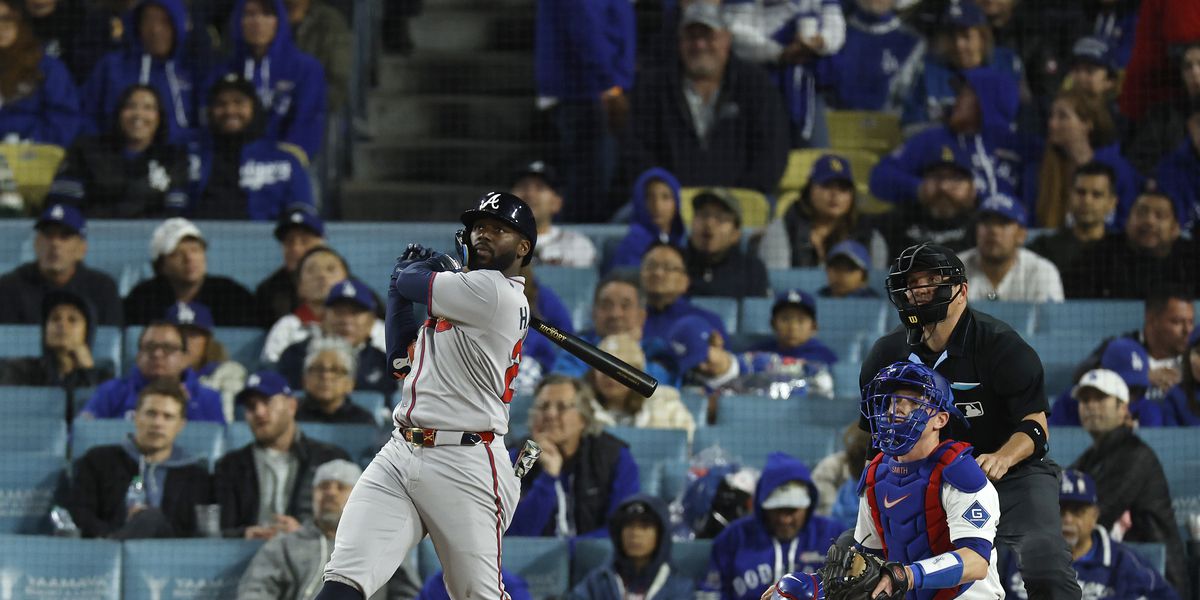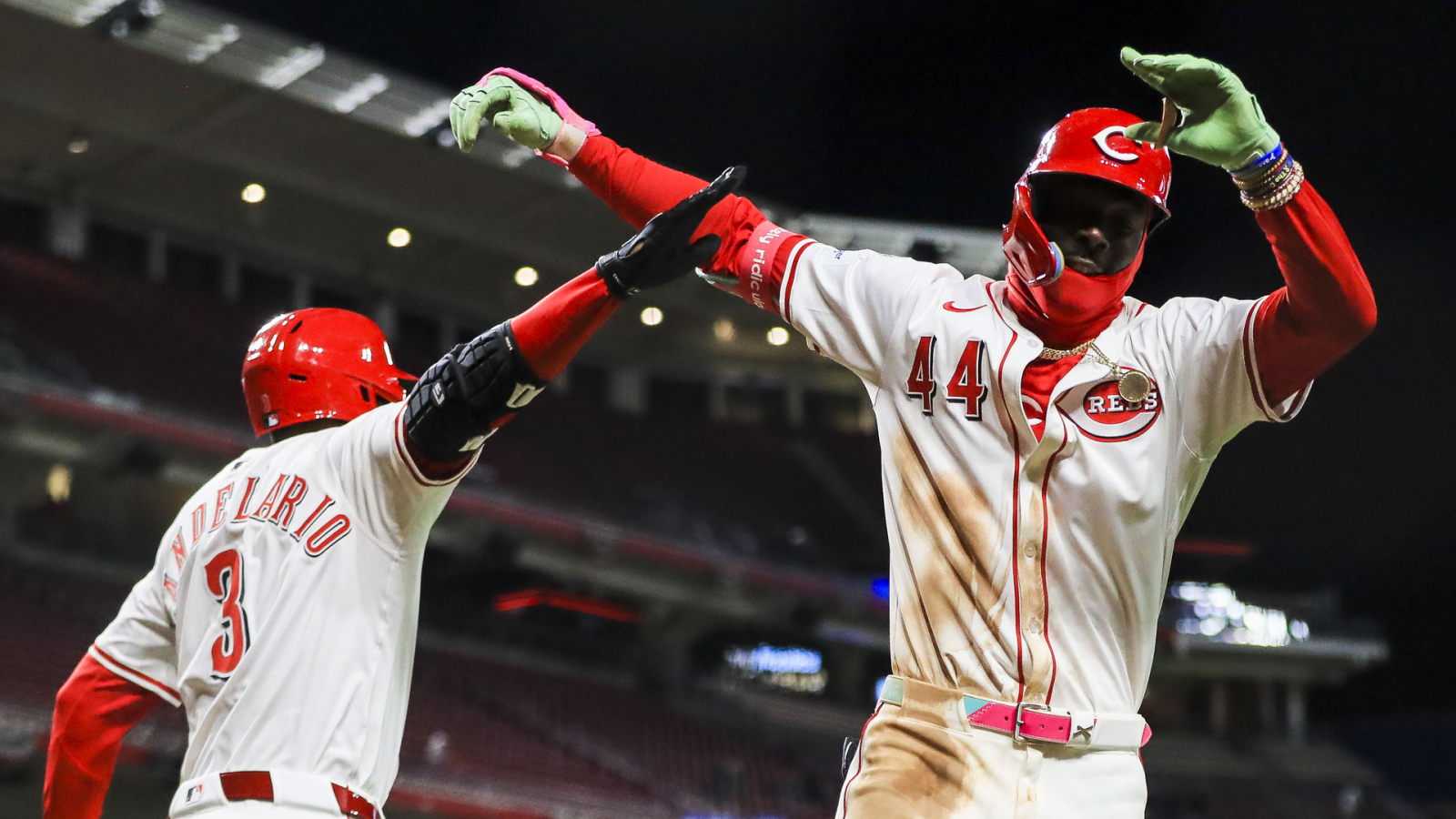
The 2025 MLB regular season is less than one week old and you have my full permission to use “it’s still early” if things aren’t going your way for your favorite team or player. It is early! It is so, so, early. If the 162-game season were a nine-inning game, there would be two outs in the top of the first inning right now. It is a long season folks. A very long season.
It may still be early, but there are a few things we can gleam from the little bit of baseball that has been played. Here now are three trends worth knowing six days into the new season.
Rice unlocking power during Stanton’s absence
Soon after the Yankees opened spring training, it was revealed Giancarlo Stanton will be sidelined indefinitely with tennis elbow in both elbows. He has been receiving treatment, including three rounds of platelet-rich plasma injections, and started hitting in the batting cage last week. Stanton is making progress, albeit slowly, and will be away from the team for some time.
With Stanton out, catcher/first baseman Ben Rice smashed five home runs in spring training and won the DH job. He had a three-homer game for New York last summer but mostly struggled in the big leagues, hitting .171/.264/.349 with seven home runs in 178 plate appearances. Before Stanton’s injury, Rice was expected to begin the regular season back in Triple-A.
Following Tuesday night’s series opener with the Diamondbacks, Rice is 5 for 10 with a double and two home runs on the young season, and he is obliterating his previous bests in exit velocity. Rice has the seven highest and nine of the 11 highest exit velocities of his career in 2025. That’s spring training, the regular season, majors, minors, whatever. Here’s the list:
- March 21, 2025: 113.8 mph
- March 1, 2025: 113.3 mph
- March 13, 2025: 113.2 mph
- March 14, 2025: 116.1 mph
- Feb. 25, 2025: 111.1 mph
- March 17, 2025: 111.1 mph
- April 1, 2025: 111.0 mph
- July 6, 2024: 110.8 mph (previous career high)
In Rice’s case, there is no swing change or mechanical tweak contributing to his career best hard-hit ability. He simply bulked up in the offseason and reported to spring training noticeably more filled out through his chest and arms. Player gets stronger, player hits the ball harder. It is a tale as old as time.
“I think the ball’s coming off the bat harder, for sure,” Rice said in spring training (via the New York Post). “Putting more mass on the ball, so it’s going to come off harder.”
Rice, 26, is a former 12th-round draft pick who had a breakout season in the minors in 2023. He is adored by analytical models that value swing decisions (i.e. Rice swings at the right pitches and doesn’t chase) and he is tailor-made for Yankee Stadium as a left-handed hitter who pulls the ball in the air an awful lot. Rice is well-equipped to abuse Yankee Stadium’s short right field porch.
There is swing and miss in Rice’s game and he has issues against lefties, so he’s a role player/platoon guy more than a centerpiece, but against righties, Rice is a strong DH option for the Yankees as they await Stanton’s return. He fits their ballpark well and his offseason training has allowed him to put “more mass on the ball,” in his own words.
Pivetta’s subtle adjustment with San Diego
Not until Feb. 17 did Nick Pivetta, a solid if unspectacular major-league pitcher, land a job this past offseason. The Padres scooped him up on what amounts to a two-year, $23 million contract with conditional player/club options for 2027, 2028, and 2029. Pivetta’s deal can max out out at $60 million from 2025-29.
On Sunday night, Pivetta made his first start with his new team, and shut down what, on paper, is a high-powered Braves lineup. He struck out four and held Atlanta to one single in seven shutout innings. That single was erased on a double play, so Pivetta faced the minimum 21 batters in seven innings. He needed only 82 pitches to do it too. It was a terrific Padres debut for the 32-year-old.
“I mean, welcome to San Diego, Nick Pivetta,” Padres manager Mike Shildt said after Sunday’s game (via MLB.com). “He dominated counts. Had life on his heater. A really, really good curveball. His sweeper was good. Really masterful game from Nick.”
Pivetta has flashed top-of-the-rotation potential throughout his career — he has two 13-strikeout games under his belt — though he’s also been maddeningly inconsistent. He’ll dominate for a stretch, struggle for a stretch, get demoted to the bullpen, come out and dominate again, so on and so forth. Whichever team signed Pivetta this offseason was going to do so thinking they could “fix” him.
Has that fix come in San Diego? It is too early to say, though it is notable the Padres and pitching coach Ruben Niebla had Pivetta change his position on the pitching rubber. On Sunday, he stood closer to the first base side of the rubber rather than in the middle. You’ll have to forgive the camera angles, we’re working with what we have one start into his season:
MLB.com/CBS Sports
“I think it’s just opened up the plate a little bit more me,” Pivetta about the adjustment during an in-game interview on ESPN’s Sunday Night Baseball. “Staying more direct. It was Ruben’s idea, so hats off to him. It was just something I had been working on throughout spring training and just getting more and more comfortable with. Keep myself in the lane and throw strikes.”
There have been two major “change your position on the rubber” success stories in the recent past: Jake Arrieta and Fernando Rodney. The Cubs moves Arrieta to the third base side of the rubber and he became a Cy Young winner. The Rays moved Rodney to the first base side of the rubber and he turned in one of the greatest reliever seasons ever in 2012.
Changing your position on the rubber is a small adjustment that can pay major dividends. It changes the pitcher’s line toward the plate and essentially the angles on all his pitchers. It’s too early to know exactly much Pivetta’s move toward the first base side of the mound will help. The first impression Sunday certainly was strong though.
MLB’s early season home run rate
Entering play Tuesday, 170 home runs had been hit in 67 MLB games, or 2.54 per game between the two teams. The Yankees and their torpedo bats had a historic home run weekend against the Brewers, so it feels like the league’s home run rate is up, but is it really? To figure that out, let’s compare this year’s home run rate in terms of homers per game, per plate appearance, per ball in play, and per fly ball through the same point in each of the last four years, meaning the first Monday of the season.
| HR per team game | HR per PA | HR per BIP | HR per FB | |
|---|---|---|---|---|
|
2021 |
1.10 |
2.9% |
4.6% |
12.8% |
|
2022 |
0.99 |
2.7% |
4.0% |
10.6% |
|
2023 |
1.18 |
3.1% |
4.7% |
13.0% |
|
2024 |
1.12 |
2.9% |
4.4% |
11.9% |
|
2025 |
1.27 |
3.4% |
5.0% |
13.3% |
Yes, the home run rate this year is higher through the same point in each of the last four seasons. Not by an insignificant amount either. On a league-wide scale, a 0.5 percentage point increase — one additional homer every 200 plate appearances — is massive. There have already been over 5,000 plate appearances this year and, on average, there are 38 plate appearances per team per game.
Keep in mind there are some unusual seasons in there. In 2021, MLB still had pandemic protocols and restrictions. In 2022, there was a truncated spring training because of the lockout. 2023 brought the pitch clock and was a World Baseball Classic year. All that, not to mention countless other factors, may have contributed to the league’s home run rate in some way.
What we do know is that, through the first Monday of the regular season, this year’s homer rate is higher than it was a similar point in each of the last four years. It is a small sample in the context of the 162-game season but again, we are talking about roughly 5,000 plate appearances here. Maybe you don’t want to draw conclusions based on that, but the data shouldn’t be thrown out either.
The league home run rate typically peaks in July and August, during the warming months of the summer. We’ll see where this year’s homer rate sits in a few weeks. Right now, it is up a bit from the last few seasons, be it because of torpedo bats or small sample size or something else entirely. The ball is leaving the yard more frequently than it did from 2021-24. It is a real thing that is happening.


